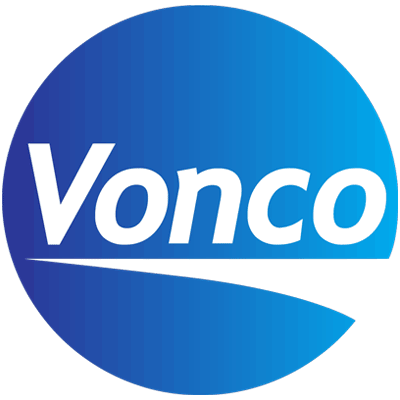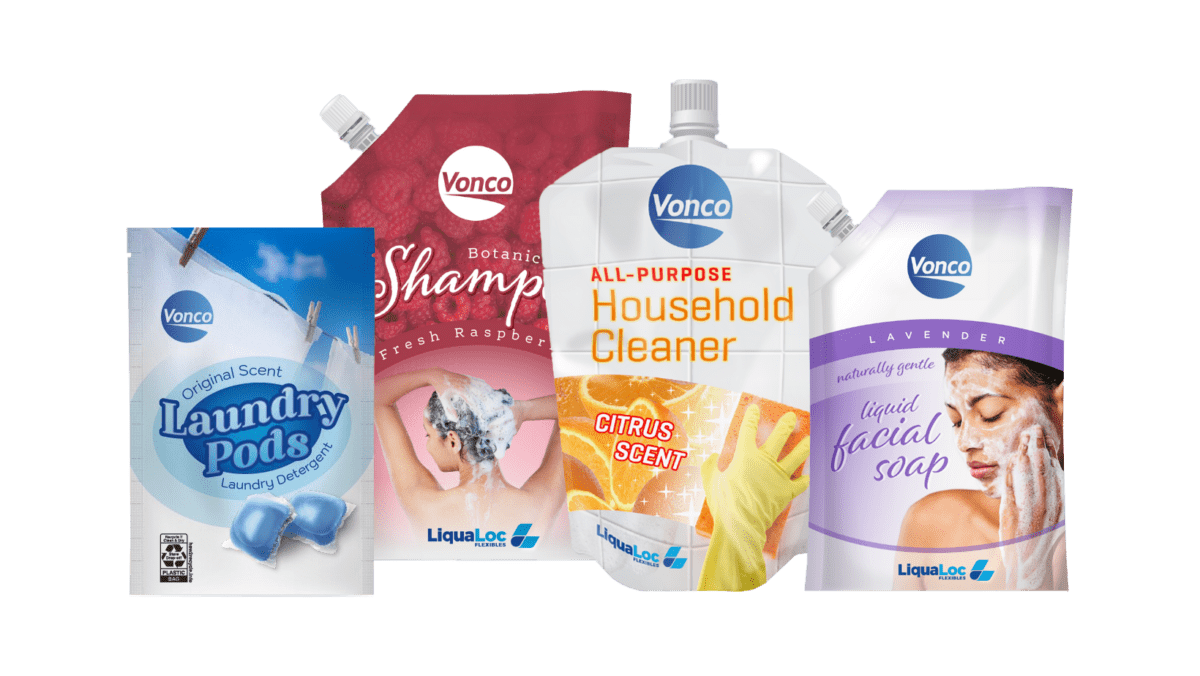Consumers are constantly faced with a multitude of choices – every day – whether it’s on TV, social media, on-line, or in the grocery store. It seems that everywhere you look, packaging, designs, and advertising all compete for our attention. In this crowded landscape, consumer packaging has emerged as a key factor in conveying brand values and creating lasting impressions. As a top contract manufacturer serving some of America’s biggest brands, Vonco Products understands the powerful influence of contemporary packaging trends. This article delves into how cutting-edge design can significantly impact the success or failure of consumer branding.
The Power of Color: More Than Just a Pretty Hue
Color remains one of the most influential aspects of packaging design. Recent trends show a shift towards bold and vibrant colors that stand out on crowded shelves. At Vonco, we’re seeing more and more brands increasingly using colors, not only to capture attention but also to convey emotion and align with brand identity. For instance, neon shades and gradient patterns are generally popular for products targeting younger audiences, while softer pastels are often used for wellness and beauty products to evoke calm and elegance.
Moreover, the choice of color can be strategically used to trigger psychological responses. For example, green is commonly associated with health and sustainability, making it a popular choice for eco-friendly products. Meanwhile, luxurious gold and deep navy hues are frequently used to signify premium quality.
Typography: The Art of Words
Typography in packaging design is experiencing a renaissance. Innovative and playful typography is being used to create a distinctive brand voice and make packaging more engaging. Custom fonts and hand-drawn typefaces are on the rise, giving brands a unique personality and a sense of authenticity. Bold, readable typefaces are employed to ensure the product name and key information stand out, even from a distance.
Additionally, designers are leveraging typography to tell a story or convey a brand’s values. For example, artisanal products might feature vintage-inspired fonts to highlight craftsmanship, while tech products might use sleek, modern fonts to emphasize innovation and cutting-edge technology.
Graphics: Telling a Visual Story
Graphics are becoming more integral in shaping brand perception and consumer interaction. Illustrations and custom artwork are increasingly used to create a narrative or evoke a lifestyle that resonates with the target audience. Minimalist designs with clean lines and simple graphics are popular for conveying modernity and sophistication, while intricate patterns and detailed illustrations are often employed to communicate heritage or artisanal quality.
In addition to static graphics, interactive elements such as QR codes and augmented reality (AR) features are making packaging more engaging. These technologies allow consumers to interact with the brand in new ways, such as accessing exclusive content, product information, or immersive experiences.
 Innovative Packaging Formats: Function Meets Aesthetics
Innovative Packaging Formats: Function Meets Aesthetics
The evolution of packaging formats is a testament to the growing emphasis on both functionality and aesthetics. Brands are experimenting with unconventional shapes and structures to create a distinctive shelf presence. Sustainable packaging solutions are also gaining traction, with many companies opting for recyclable, biodegradable, or reusable materials. This not only appeals to environmentally conscious consumers but also aligns with broader corporate sustainability goals.
Innovative formats, such as collapsible or modular packaging, are being introduced to enhance convenience and reduce waste. Additionally, smart packaging technologies, like NFC chips and RFID tags, are emerging to provide consumers with real-time product information and enhance the overall user experience.

Shelf Appeal: The Final Frontier
At the end of the day, packaging design must not only attract consumers but also stand out on the shelf. The competition for shelf space is fierce, and effective packaging must quickly communicate the product’s benefits and differentiate it from competitors. Designers are increasingly focusing on creating eye-catching designs that are both aesthetically pleasing and practical, ensuring that the packaging does more than just house the product—it actively enhances its market presence.
Conclusion
The role of packaging design in consumer branding has never been more critical. As trends continue to evolve, brands must remain agile and innovative to keep pace with shifting consumer preferences and market dynamics. Vonco can help you harness the power of color, typography, graphics, and innovative formats so your brand packaging not only captivates but also cultivates lasting connections with audiences.
In a world where first impressions are often your first and only chance to make a sale, shouldn’t you partner with someone who understands that packaging design is not just an art but a strategic tool for success?



